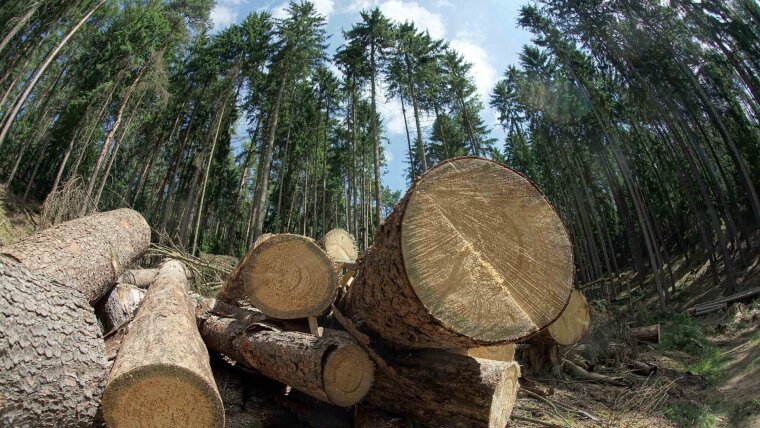
- Knowledge Transfer and Innovation
- Research
Published: | By: Ute Schönfelder
The biopolymer lignin is found in large quantities in trees. It ensures that the wood of the trees remains stable. If this wood is processed into paper, for example, only the cellulose part of the wood is of interest. The lignin remains – almost half of the tree's mass. "The pulp industry accumulates around 50 million tonnes of lignin worldwide every year. The majority of this is simply incinerated," says Prof. Dr Martin Oschatz from the University of Jena. However, the Professor of Chemistry of Materials for Energy Applications emphasizes that lignin is far too valuable for this. "Like cellulose and other biopolymers, it consists of hydrocarbon building blocks that can be utilized much more effectively in chemistry."
This is exactly what Oschatz and an interdisciplinary research team from the Center for Energy and Environmental Chemistry (CEEC Jena), which is based at the University, are now planning to do. Their new joint project "LignUp" aims to upgrade lignin from a waste product to a recyclable material. The project will receive almost five million euros in funding from the Carl Zeiss Foundation over the next six years as part of the "CZS Breakthroughs" programme External link.
Domestic raw material links critical resources with bioeconomy
Specifically, the researchers are focussing on the use of lignin as a starting material for functional materials that help to make energy storage systems more sustainable. "Batteries usually still contain critical metals such as lithium, cobalt or manganese, which are expensive to extract and whose resources are limited," says Oschatz. He and the "LignUp" team therefore want to look for new battery materials that can be produced on the basis of lignin and that no longer require these metals. Lignin can also be used to synthesize new types of filter materials that can selectively separate metals from aqueous solutions. This would allow critical metals to be recovered in sustainable battery recycling processes or extracted in an environmentally friendly way in water-based ore processing.
"For the first time, we are linking industrial bioeconomy with energy technology in a cross-industry way. Due to its versatile chemical structure, lignin is a very suitable starting material for such innovative functional materials," says environmental chemist Prof. Dr Michael Stelter, who heads the "LignUp" team together with Martin Oschatz. In addition, lignin is available in large quantities and stable quality as a domestic raw material and is therefore also ideally suited for large-scale industrial utilization, Stelter continues. The new project will also kick off a new long-term focus on bioeconomy and energy materials at CEEC Jena.
Lignin as the basis for electrodes in energy storage systems
Carbon active materials obtained from lignin could, for example, be used as electrode materials in storage capacitors and sodium batteries, where they could replace critical metals. These and other sustainable energy storage systems such as metal-free redox flow batteries have long been a research focus of the CEEC Jena, from which the core team of the "LignUp" project is also recruited. External researchers from the Thuringian Innovation Centre for Recyclable Materials (ThIWERT) in Nordhausen and from the University of Bayreuth are also contributing their expertise.
Lignin-based functional materials for enriching metals
The second pillar of the project is about tapping into new sources of critical metals. "Attempts are already being made to separate interesting metals from seawater or special mining waters using membranes or adsorption materials. In the future, water-based recycling processes for metals will follow – for example from battery recycling. We therefore want to build up a material library and develop synthesis routes that can be used to customize new functional materials from lignin components that are better suited to the extraction of metals from water," says Martin Oschatz.